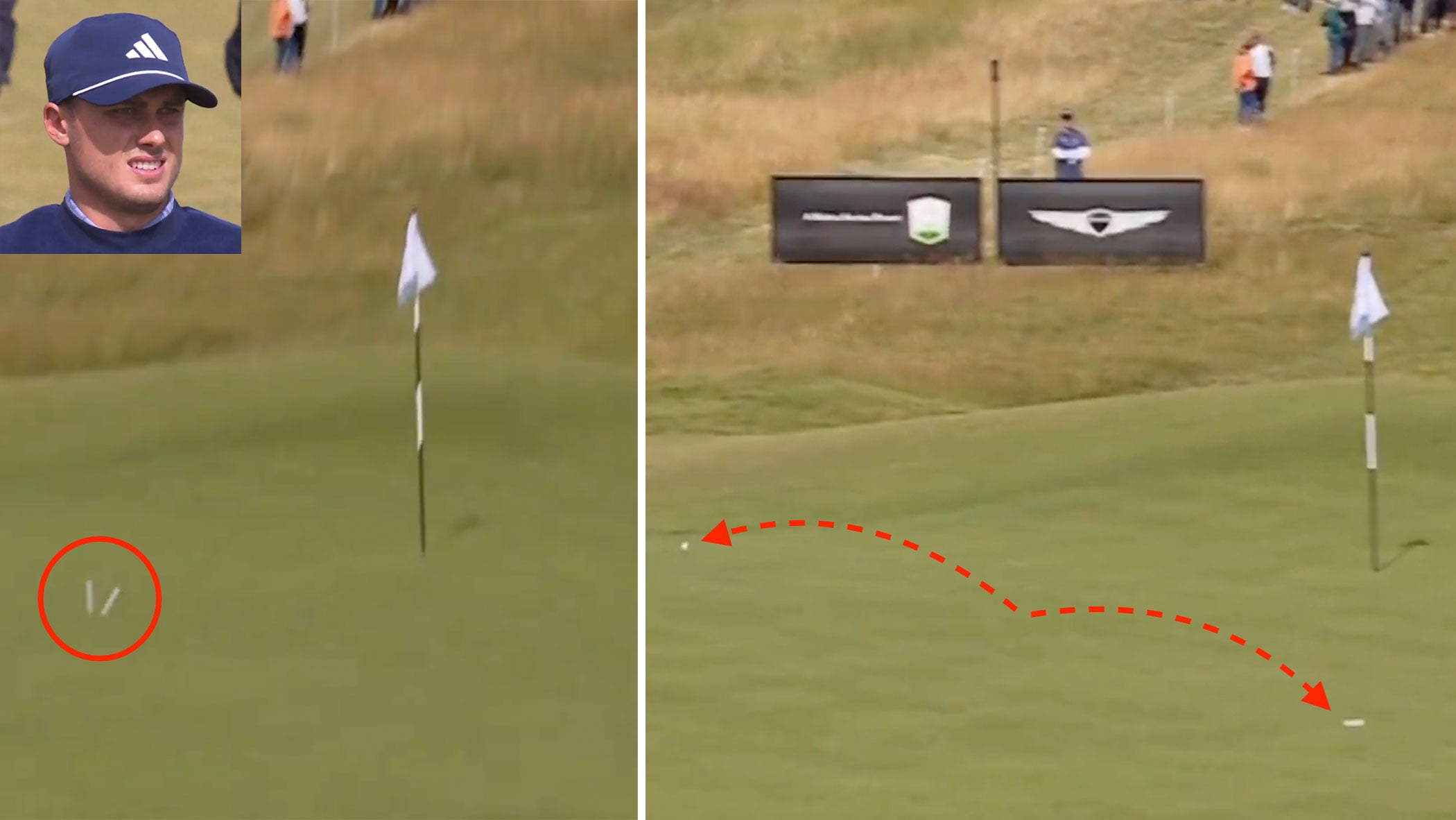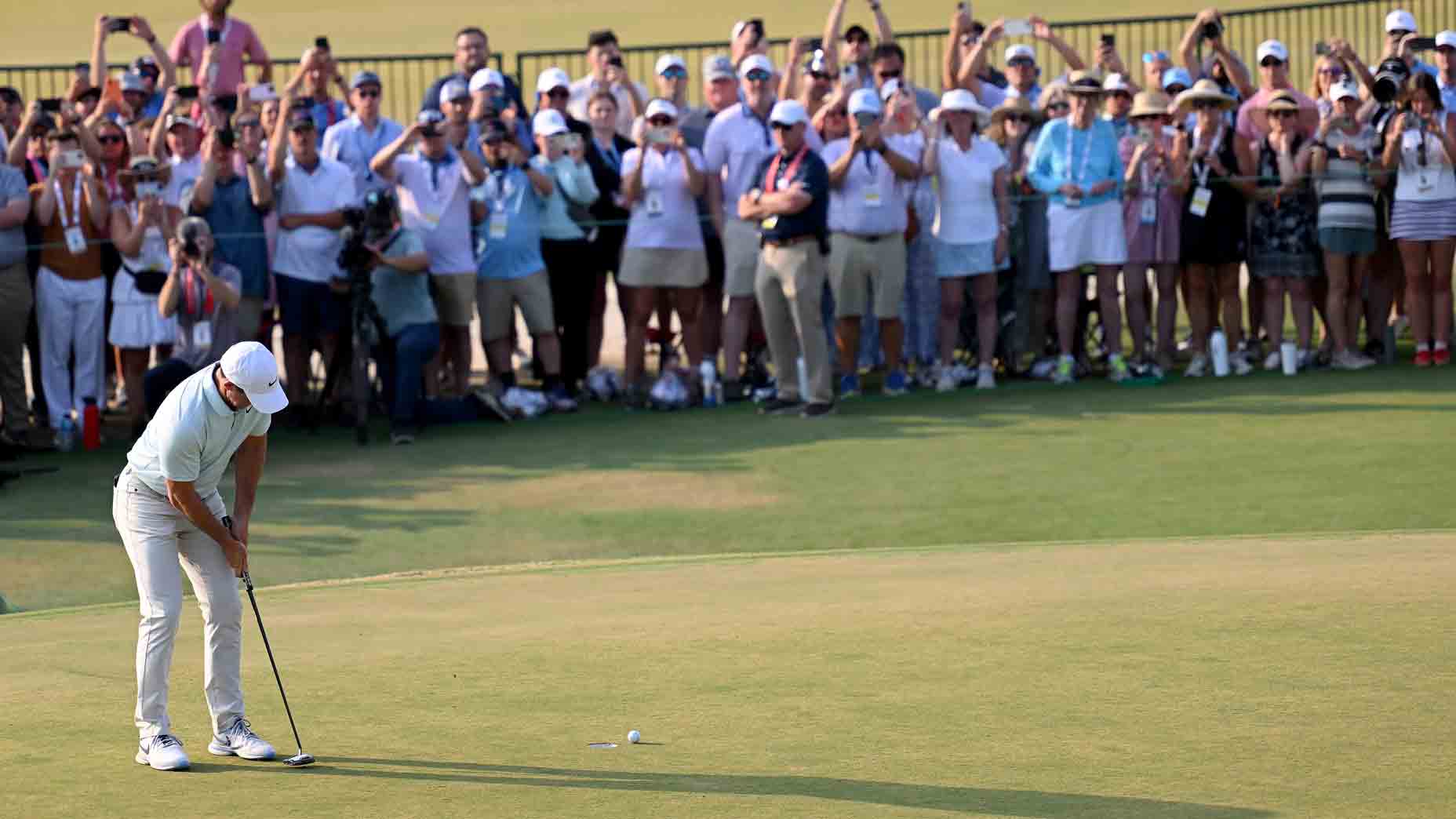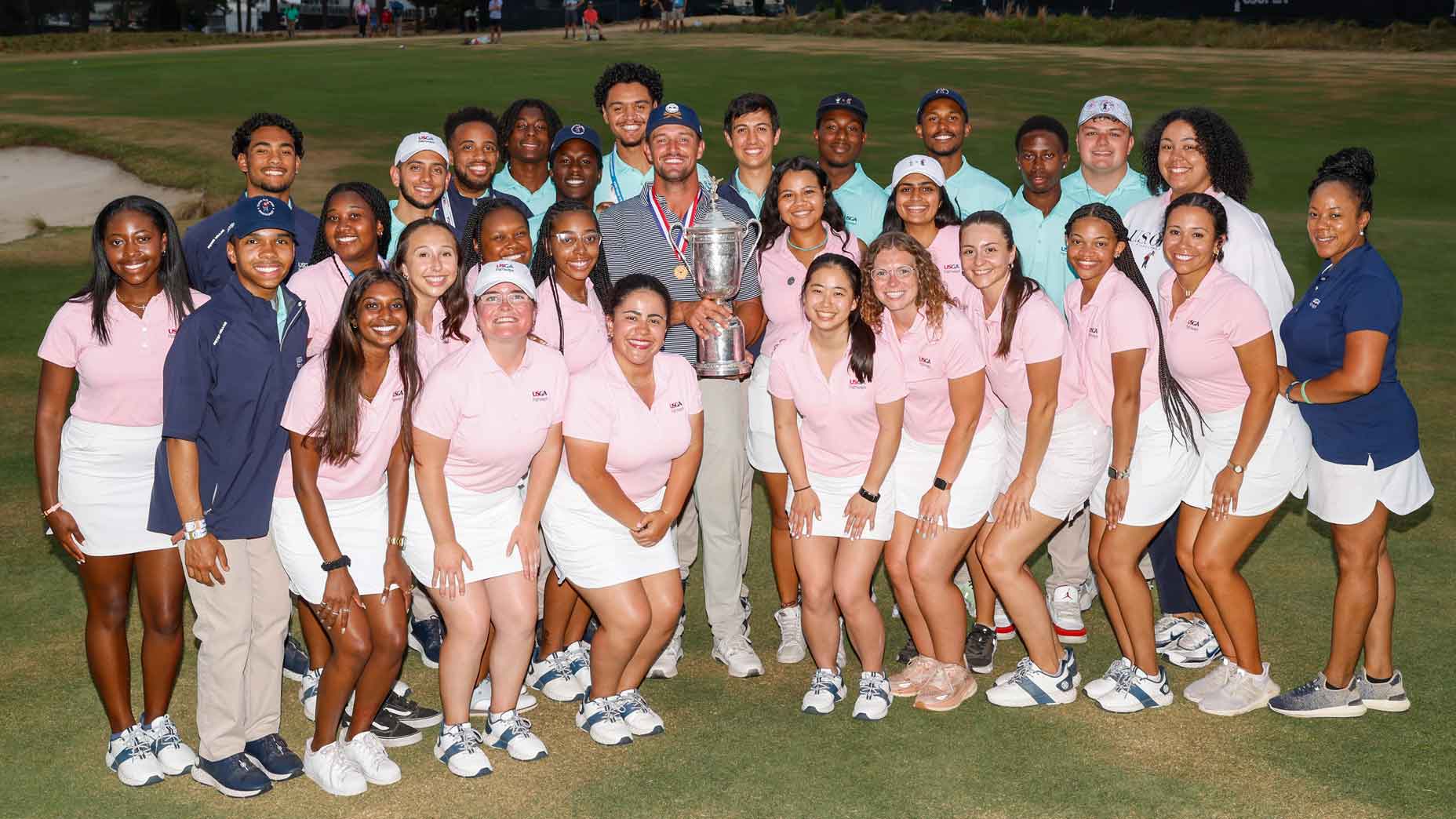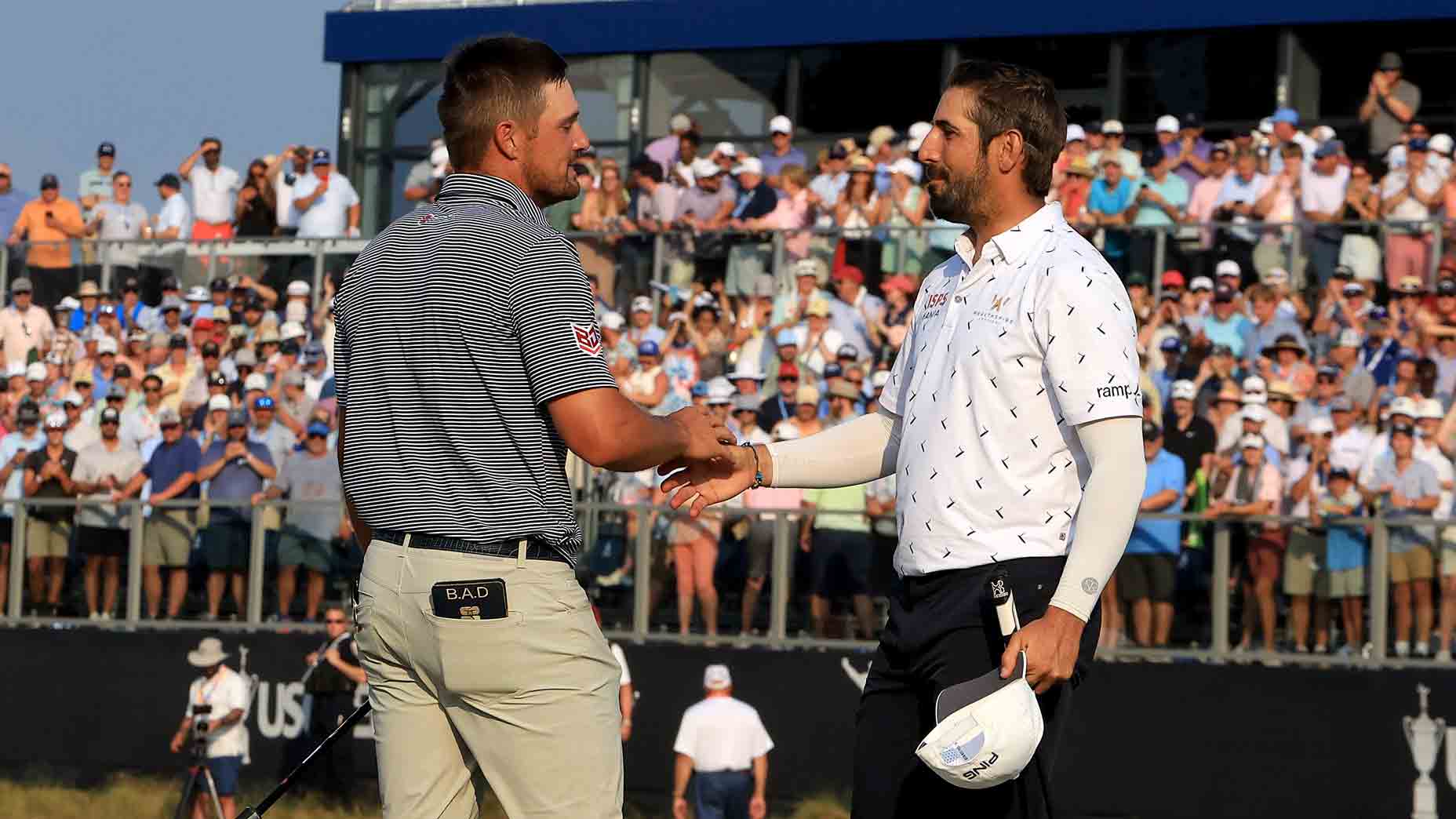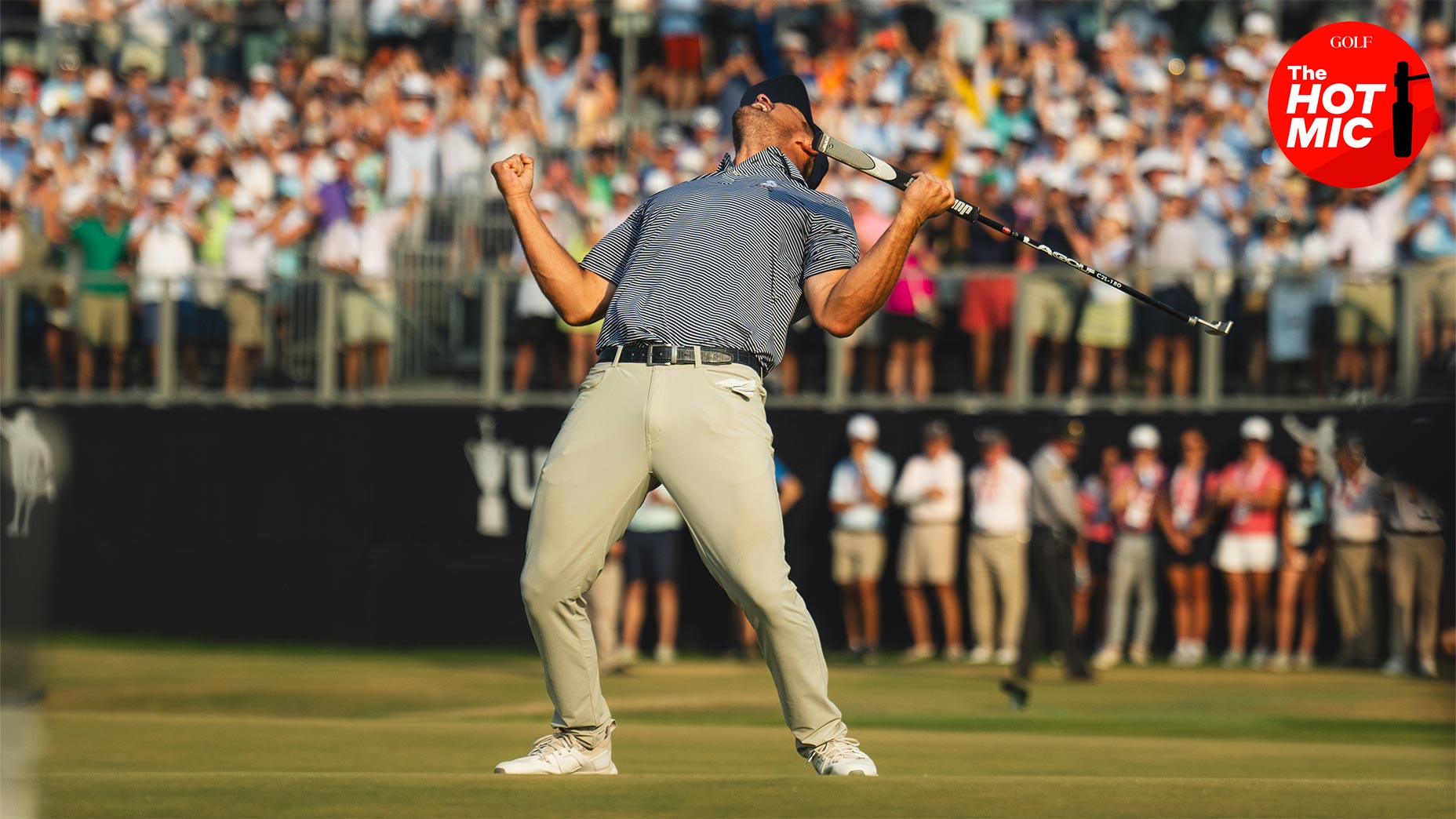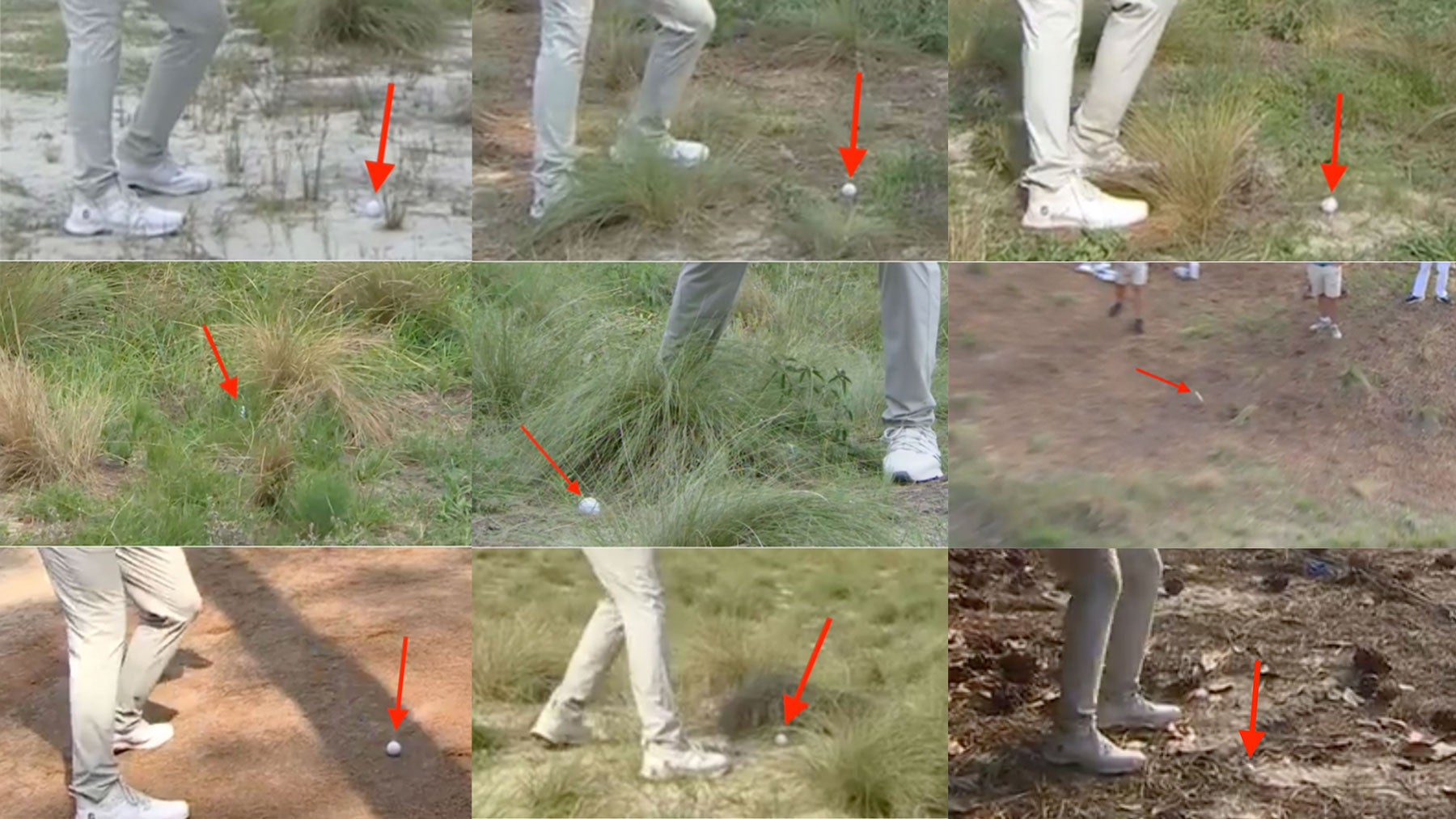What I learned following Rory McIlroy’s final U.S. Open practice round
- Share on Facebook
- Share on Twitter
- Share by Email
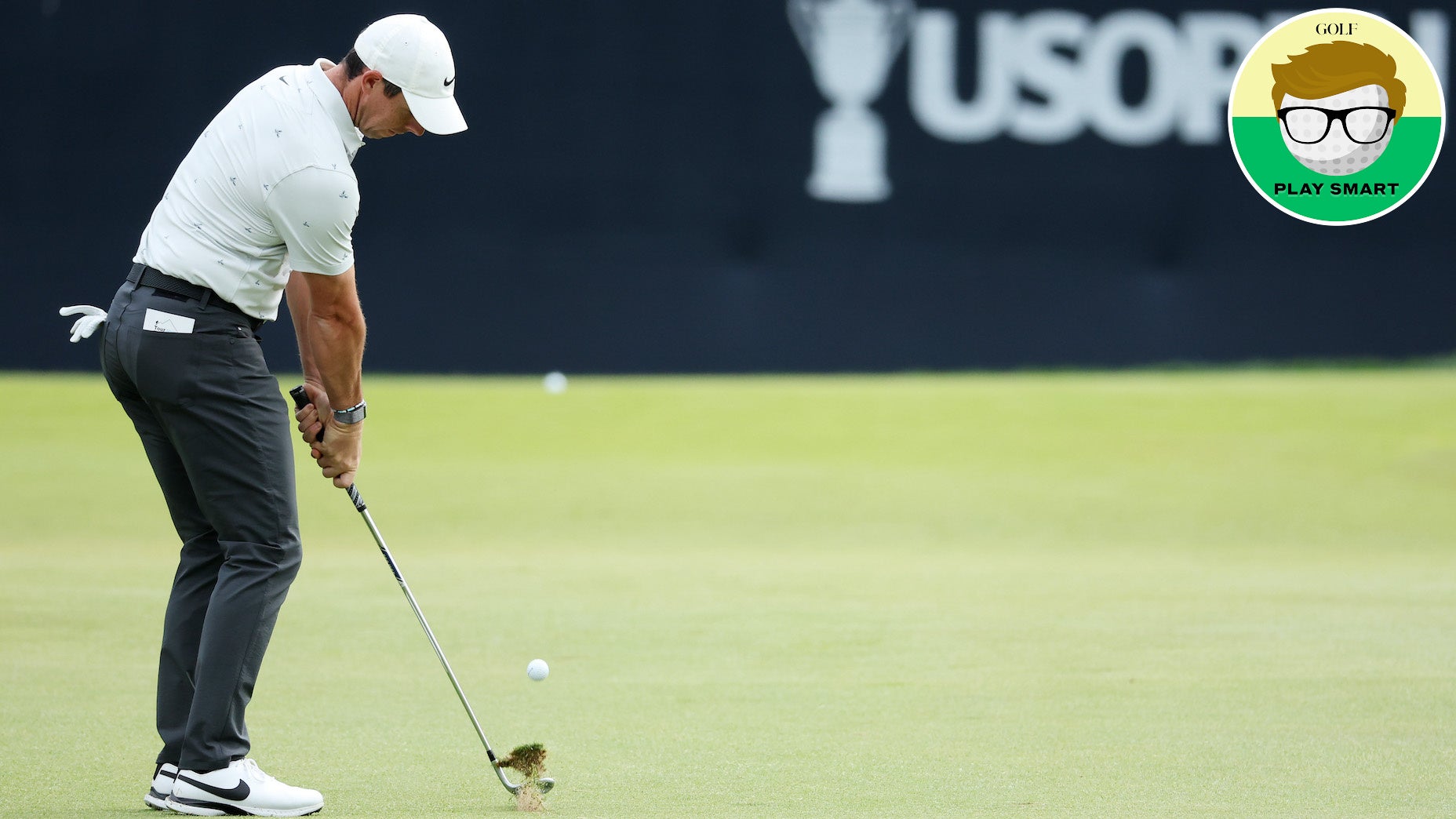
Rory McIlroy is among the favorites this week at The Country Club.
Getty Images
Welcome to Play Smart, a game-improvement column that drops every Monday, Wednesday and Friday from Game Improvement Editor Luke Kerr-Dineen (who you can follow on Twitter right here).
BROOKLINE, Mass. — It was 6:34 a.m., and there was only one man on the course.
Rory McIlroy was the first player off on the final day before the 2022 U.S. Open gets underway. He played nine holes — the front nine — alone, with Harry Diamond on the bag and father Gerry walking along. The sky gets bright early here in Massachusetts in the summertime; a natural alarm clock which means early-risers can get a shift in before the rest of the world notices.
Such was the case with Rory on the eve of this year’s national championship. As for how he looked? Here’s a few things I noticed along the way
1. He played really fast
The practice rounds have been slow at The Country Club this week, for wholly understandable reasons. The greens undulate severely, and many are guarded by blind shots from tee-to-green. With so much on the line, players have been hitting lots of extra shots in practice rounds to get comfortable with the awkward lines they’ll encounter this week.
It’s been a formula for grueling, slow practice rounds. For Rory McIlroy, a notably fast player, sneaking out early in the morning means he can avoid running into any traffic jams. He’d often hit one extra ball off the tee and around the greens, but even so he buzzed around: He teed off just after 6:30 a.m., and by 8 a.m. he was walking off the tee of his ninth and final hole of the day. A quick autograph session later, he was back on the practice putting green by 10, finishing up his work for the day.
From my seat in the house, it was the view of a man who had done his homework already. Wednesday was for staying loose and kicking the tires one last time before the tournament began.
A perfect look at a fresh-off-a-win Rory McIlroy slamming a drive down the middle of the first hole
A+ start to the week 🙌 pic.twitter.com/jsz1DEkFe2
— LKD (@LukeKerrDineen) June 13, 2022
2. Expect him to hit lots of drivers
2021 was a year where Rory’s driver — ordinarily his strength — was maddeningly unreliable. There were no signs of that during his practice round on Wednesday. Rory was pulling lots of drivers, and kept reaping its rewards.
He hit two drives off the drivable 310 yard, par-4 5th hole, one into a bunker short and the other into greenside rough. He knocked both of his next shots inside five feet.
On the 375-yard 7th hole, he needed just one drive, which he sent directly down the middle of the fairway. He hit a knockdown wedge to tap-in range.
On the 557-yard eighth hole, he hit two drives once again: First a fade across the angled fairway, then a draw funneling down it. Those are the only two shots he’ll need off this tee, he said. Which one he calls upon will depend on the wind.
Whether the hole was short or long, the wind blowing left or right, Rory looked at ease with the longest club in his bag. It’s exciting news for Rory fans — and a potentially scary development for the rest of the field.
3. His fade is his go-to
The last time Rory won the U.S. Open, in 2011, he brought Congressional to its knees with a sweeping draw. If he lifts the trophy again this week, it’ll be be doing the opposite.
“I’ve been more comfortable moving the ball from left-to-right at the minute,” Rory says. “I can be more aggressive with my body.”
Rory seems to be especially comfortable hitting fades with his wedges. He’ll tend to finish higher with his hands on his follow through: A feeling we saw Tiger Woods use during his 2006 run that prevents the clubface from rolling over and sending the ball left.
From any objective measure, it’s working.
Rory gained more than 4.2 shots on the field off the tee at the Canadian Open, and this week, calling on more fades gives Rory a little extra backspin to work with. With the greens as small as they are, and the fairways firming up more and more every hour, that’s exactly what I saw from Rory on Wednesday morning. Slight fades off tees and into greens, which helped the ball stop dead quickly after coming back down to earth. It was a one-hop-and-stop strategy that allowed Rory to be more aggressive both off tees (knowing his drivers would be less likely to run through the fairway) and into greens.
A little Rory action to start the day.
Keep an eye on the golf ball. Line is the TV tower, and the ball doesn’t track an inch off it pic.twitter.com/KwVhU7FIG4
— LKD (@LukeKerrDineen) June 15, 2022
4. He practices the same putt, with different speeds
Another common theme from Rory’s final U.S. Open practice round was him hitting the same putt with two different speeds.
On his seventh hole, for instance, Rory dropped two balls on the green and spent about three minutes putting back and forth to two tees his caddy Harry had placed in the ground. On his first putt, he’d aim lower and hit firmer with less break. On the second he aimed higher, played more break, and hit the ball softer. He’d see how the two putts compared to each other — a simple feel drill that has become a bedrock part of his preparations, according to his putting coach Brad Faxon.
“It opens up the creative side of your brain,” Faxon says. “It enhances your ability to visualize and feel how the putt will react in different ways. It’s also just fun to practice this way.”
Relaxed and guided by feel. It’s the setting that seems to help Rory play his best golf. And a day before the contest began, it was certainly the vibe he was riding during an early morning trip around Brookline.
Latest In Instruction

Luke Kerr-Dineen
Golf.com Contributor
Luke Kerr-Dineen is the Game Improvement Editor at GOLF Magazine and GOLF.com. In his role he oversees the brand’s game improvement content spanning instruction, equipment, health and fitness, across all of GOLF’s multimedia platforms.
An alumni of the International Junior Golf Academy and the University of South Carolina–Beaufort golf team, where he helped them to No. 1 in the national NAIA rankings, Luke moved to New York in 2012 to pursue his Masters degree in Journalism from Columbia University. His work has also appeared in USA Today, Golf Digest, Newsweek and The Daily Beast.


